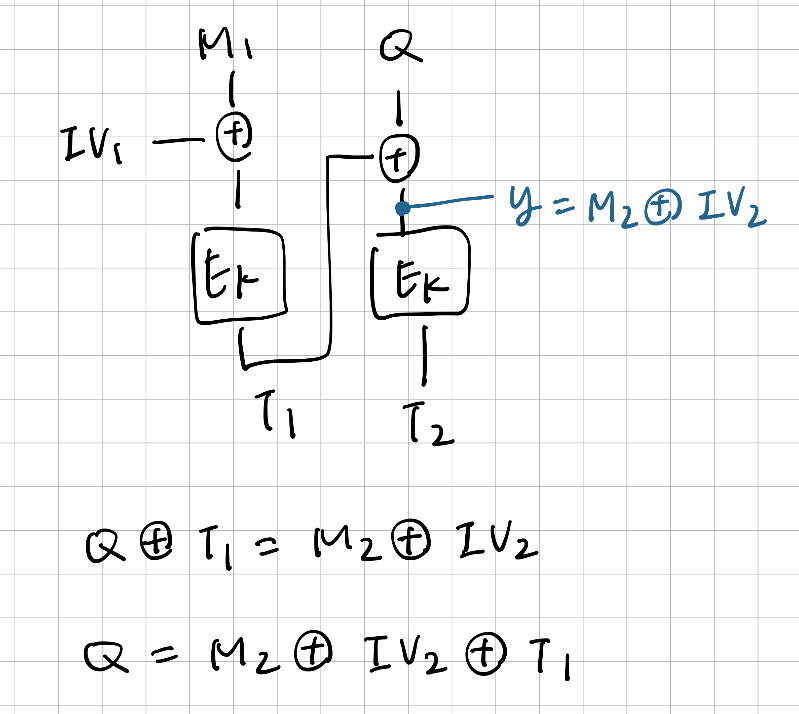Given the above MAC scheme, I want to ask how to form existential forgery of this scheme?
I have looked through a couple explanations on existential forgery but still struggle understanding the concept of it.
Based on the hint provided in the problem, the current method I'm working on is to
- Start with two messages $M_1$ and $M_2$, giving known outputs $(IV_1, T_1)$ and $(IV_2, T_2)$.
- Produce a message $M_3$ with output $(IV_1, T_2)$.
- $M_3$ will be close to concatenation $M_1||M_2$, but with one block altered.
How can I do this? Do I need to partition $M_1$ and $M_2$ to fit into $m_0$ to $m_2$?
EDIT2
I'm thinking is this a possible solution for $M_3$?


